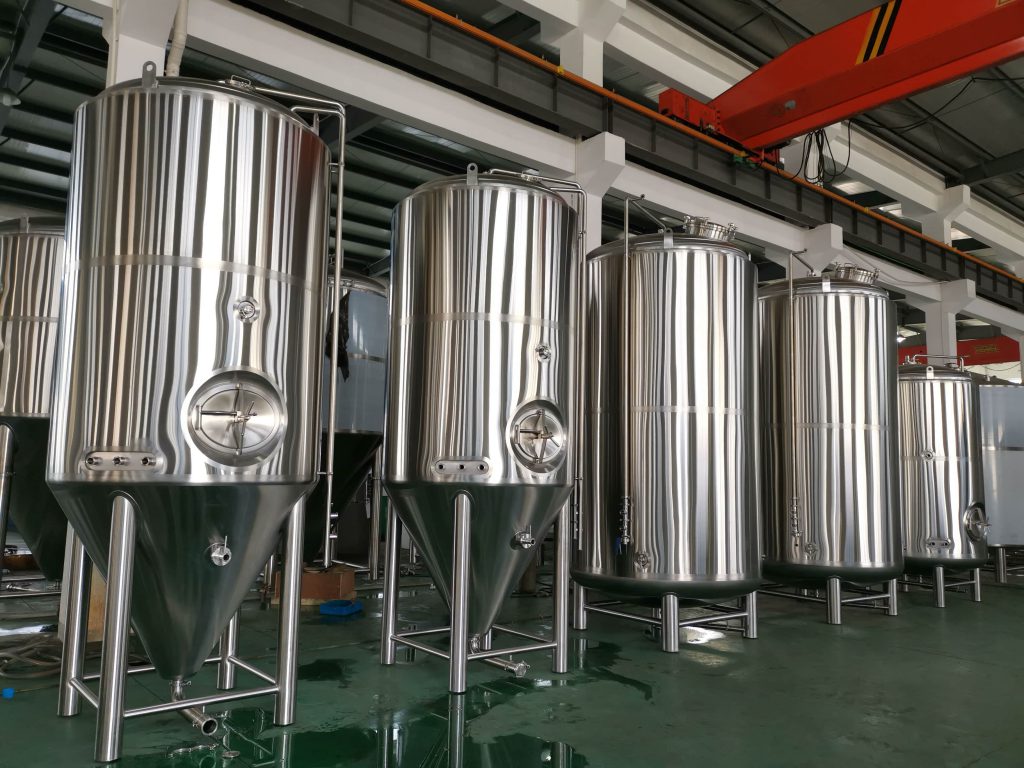Introduction

Craft beer has become a significant cultural and economic phenomenon in recent years, with breweries popping up across the globe. At the heart of this craft beer movement is the brew tank, a critical component in the beer production process. Understanding the role of fermentation tanks can deepen your appreciation for craft beer and the intricate methods behind its production.
What is a Brew Tank?
A brew tank, also known as a fermentation tank or brew kettle, is essential for brewing beer. These vessels are designed to hold and facilitate the various stages of brewing, from mashing to fermentation. Fermentation tanks come in various sizes, materials, and designs, tailored to the specific needs of a brewery.
Types of Brew Tanks
- Brew Kettles: Used for boiling the wort and adding hops.
- Fermentation Tanks: Where yeast converts sugars into alcohol.
- Conditioning Tanks: Used for aging the beer and developing flavors.
| Type of Brew Tank | Primary Use | Common Materials |
|---|---|---|
| Brew Kettle | Boiling wort | Stainless steel, copper |
| Fermentation Tank | Primary fermentation | Stainless steel |
| Conditioning Tank | Aging and flavor development | Stainless steel |
The Brewing Process: A Closer Look at Brew Tanks
To appreciate the significance of brew tanks, it’s essential to understand the brewing process itself. This process can be divided into several stages, each requiring specific types of fermentation tanks.
Mashing in Brew Kettles
The brewing process begins with mashing, where malted grains are combined with hot water in the brew kettle. This step activates enzymes that convert starches into sugars, laying the foundation for the beer’s flavor.
Boiling and Hops Addition
After mashing, the wort is boiled in the brew kettle. This stage is crucial for sterilizing the wort and extracting flavors from hops. The design of the brew kettle can affect the efficiency of heat transfer and hop utilization.
Fermentation in Fermentation Tanks
Once boiling is complete, the wort is cooled and transferred to fermentation tanks. Here, yeast is added, and fermentation occurs, typically lasting from several days to weeks. The choice of fermentation tank can impact the beer’s flavor profile and clarity.
Conditioning in Conditioning Tanks
After fermentation, beer is often transferred to conditioning tanks. This step allows for further flavor development and clarification. Many breweries use temperature-controlled conditioning tanks to fine-tune the beer’s final characteristics.
The Importance of Brew Tank Materials
The materials used in brew tanks are crucial for maintaining the quality and flavor of the beer. Here’s a look at some common materials and their implications.
Stainless Steel
Stainless steel is the most popular material for fermentation tanks due to its durability, ease of cleaning, and resistance to corrosion. It does not impart any flavors to the beer, making it ideal for both fermentation and conditioning.
Copper
Copper brew kettles are often favored for their aesthetic appeal and excellent heat conductivity. However, they require more maintenance to prevent tarnishing and must be lined to avoid reactions with certain ingredients.
Plastic
While not as common for larger operations, food-grade plastic fermenters are lightweight and affordable. They are typically used by homebrewers or small breweries.
How Brew Tank Design Affects Beer Quality
The design of brew tanks can greatly influence the quality of the beer produced. Several factors come into play:
Size and Shape
The size and shape of a fermentation tank can affect heat distribution and fermentation efficiency. Taller tanks often allow for better separation of yeast and beer, while wider tanks can facilitate easier cleaning.
Temperature Control
Many modern brew tanks come equipped with temperature control systems. This feature allows brewers to maintain optimal fermentation conditions, ensuring consistent quality.
Pressure Control
Some breweries use pressurized fermentation tanks to enhance certain styles of beer, like lagers. This pressure allows for faster fermentation and can help create a different flavor profile.
The Economic Impact of Brew Tanks on Craft Breweries

Investing in high-quality fermentation tanks can significantly affect the profitability and operational efficiency of a craft brewery.
Production Capacity
The size of the brew tank directly influences the amount of beer that can be produced. Larger tanks can reduce the cost per unit, making it easier for breweries to scale up production.
Labor Efficiency
Investing in advanced fermentation tanks with automated features can reduce labor costs and improve operational efficiency. This allows breweries to focus more on creativity and less on repetitive tasks.
Conclusion
Brew tanks play an indispensable role in the craft beer production process. From the initial mashing to fermentation and conditioning, the type, design, and material of brew tanks directly influence the final product. Understanding these elements not only enhances our appreciation for craft beer but also highlights the craftsmanship involved in brewing.
FAQ
What is the average size of a brew tank in a craft brewery?
The average size of a brew tank can vary widely, but many craft breweries utilize tanks ranging from 5 to 30 barrels.
How do fermentation tanks affect the flavor of beer?
The material and design of fermentation tanks can impact heat distribution, fermentation efficiency, and ultimately the flavor profile of the beer.
Can you use the same brew tank for different beer styles?
Yes, but it’s essential to clean and sanitize the tank thoroughly between batches to prevent cross-contamination of flavors.
What maintenance do fermentation tanks require?
Regular cleaning, inspection for leaks, and ensuring that temperature and pressure controls are functioning correctly are crucial for maintaining fermentation tanks.
Are there specific regulations for brew tanks?
Yes, breweries must comply with health and safety regulations, which may vary by location. These often include sanitation and material standards.

